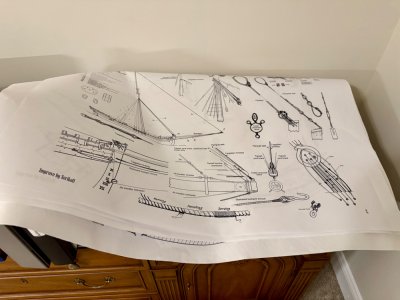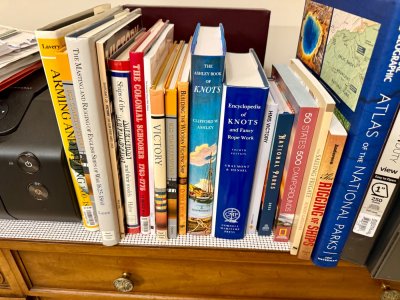- Joined
- Feb 18, 2019
- Messages
- 717
- Points
- 353

Let us not forget that building ships is at the same time an Art and a Science: but it does not make the ship itself a piece of art... especially when a vessel was originally launched. Nations, trading companies, etc... did not send a piece of art to battle, to do commerce or built / assigned ships for dicovery missions.
Ships / vessels were certainly modified in search of speed and manoeuvrability. At least within the French Navy, captains would have had some leeway during trial periods following official launch, but one would suspect that major modifications typically needed to be approved: modifications in the rigging, such as length of masts and spars. Items such as sails were assigned as part of vessel rating as the rigging was designed as part of the planing process.
Armament would likely follow the same procedure and originally be set as per contemporary regulations.
The actual stucture of the vessel would have been well extablished through regulations and "best-practices" according to time period and vessel purpose.
Interior layout and furinishings may have been easier to be modified from the original designs, but then again, not certain, as hold space was typically set as per needs for the vessel's purpose.
Modification would certainly occur following vessel rifits, as well as capture by an enemy Nation. these would certainly be recorded through plan drafts and written reports.
As far as decorations, the original plans seldom give the exact carvings and the ship designer / engineer often included some "project drafts". but these drafts do not guarantee absolute accuracy either.
17, 18, 19th century vessels have certainly been made into art pieces through contemporay models, and models built later in an effort to document and illustrate the science of building ships. These models are often what inspires modelers working with an interest for the time period. These models could very well be what actually launch the modern version of our hobby.
Ships / vessels were certainly modified in search of speed and manoeuvrability. At least within the French Navy, captains would have had some leeway during trial periods following official launch, but one would suspect that major modifications typically needed to be approved: modifications in the rigging, such as length of masts and spars. Items such as sails were assigned as part of vessel rating as the rigging was designed as part of the planing process.
Armament would likely follow the same procedure and originally be set as per contemporary regulations.
The actual stucture of the vessel would have been well extablished through regulations and "best-practices" according to time period and vessel purpose.
Interior layout and furinishings may have been easier to be modified from the original designs, but then again, not certain, as hold space was typically set as per needs for the vessel's purpose.
Modification would certainly occur following vessel rifits, as well as capture by an enemy Nation. these would certainly be recorded through plan drafts and written reports.
As far as decorations, the original plans seldom give the exact carvings and the ship designer / engineer often included some "project drafts". but these drafts do not guarantee absolute accuracy either.
17, 18, 19th century vessels have certainly been made into art pieces through contemporay models, and models built later in an effort to document and illustrate the science of building ships. These models are often what inspires modelers working with an interest for the time period. These models could very well be what actually launch the modern version of our hobby.
Kindest regards and happy modeling.
G
Last edited:









